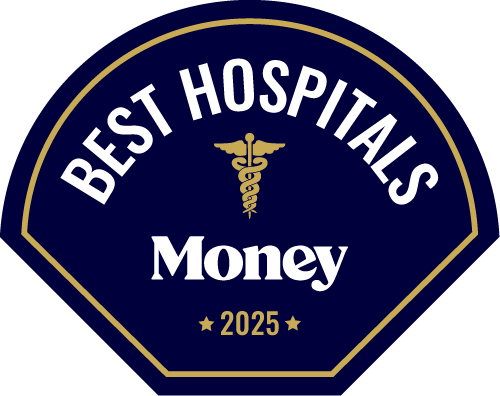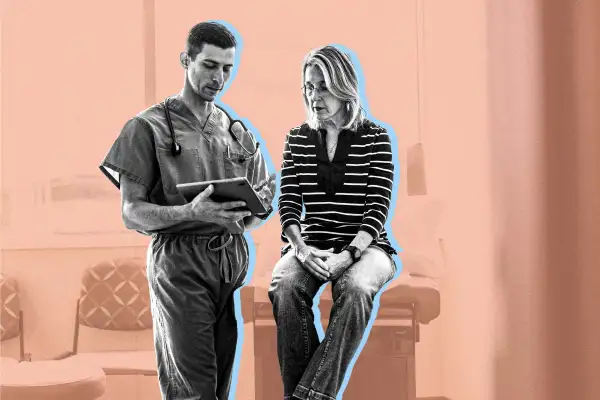Money’s ranking of the best hospitals for cancer care carefully culls the nation’s cancer-treatment facilities down to a list of the top 75 institutions.
Our methodological approach favors facilities that provide cutting-edge cancer care and research and are staffed by the most experienced oncologists and cancer specialists.
Our data partners for this ranking were Denniston Data and Definitive Healthcare. We also relied on publicly available data from the federal National Cancer Institute, the American College of Surgeons and the National Comprehensive Cancer Network.
Here’s a detailed look at how we determined our 75 choices.
Setting a strict benchmark
To whittle down the list of the 6,000 or so hospitals across the nation, we created an initial benchmark for facilities to be considered as among the best cancer facilities: Candidate hospitals needed to employ highly experienced oncologists across several different cancer specialties.
Several studies show that the more experienced a physician is with a certain procedure, the better the health outcome for patients. Our data partner Denniston scores more than 1 million providers through its “Provider Ranking System” (PRS). The PRS measures each provider’s experience with a certain procedure or within a specific specialty by analyzing the frequency of treatment and billable costs as reported to the federal government through the Healthcare Common Procedure Coding System (HCPCS).
The frequency of the procedure by the provider is then compared to other providers. Each practitioner received a score of between 0% to 100% based on their experience — where 98%, for example, means that only 2% of providers ranked higher.
This percentile score ultimately gets translated into a letter grade. Here’s how the grades align with the percentage scores:
- A+ is a CRS score of 95% to 100%.
- A is 85% to 94.99%.
- A- is 80% to 84.99%.
- B+ is 75% to 79.99%.
- B is 65% to 74.99%.
- B- is CRS 60% to 64.99%.
- C+ is 55% to 59.99%.
- C is 45% to 54.99%.
- C- is 40% to 49.99%.
- D+ is 35% to 39.99%.
- D is 25% to 34.99%.
- D- is 20% to 24.99%.
- F is below 20%.
For a hospital to be identified and included in Money’s analysis, it must have at least one A-rated oncologist, as determined by Denniston’s ranking system, in each of the following specialties: medical oncology, radiation oncology, hematology-oncology, surgical oncology and gynecological oncology.
Rewarding stand-out cancer care
Next, the facilities that met the benchmark were given a hospital-level score based on four key areas:
- Federal ratings from the Centers for Medicare & Medicaid Services (weighted at 10%): Both quality and patient-experience ratings were measured separately. (More below on exemptions.)
- The facility’s specialization in cancer (20%): This category measures each hospital’s level of focus on providing cancer care, whether its most-performed procedures are directly related to cancer treatment, and a novel ratio of the number of oncology specialists to the number of physicians.
- Cancer services and research (35%): Beside basic oncological services, we considered whether the hospital had a dedicated oncology program accredited by the American College of Surgeons. We also preferred facilities that provide in-house palliative and hospice care and ones that participate in above-average levels of clinical trials to push the boundaries of cancer research and care.
- Designations and accreditations (35%): A key designation we considered was whether a hospital was named a “comprehensive,” “clinical” or “laboratory” cancer center by the federal government. We also rewarded ACS-designated Commission on Cancer hospitals, Academic Medical Centers and other groups.
CMS’s quality rating factors each facility’s rates of mortality, infections, complications, readmissions and more. It also gauges whether patients had a positive experience based on their self-reported ratings of how well their doctors and nurses communicated with them.
In a departure from our other Best Hospital rankings, we removed the requirement that a hospital needed a 3 star rating or higher from CMS, for two key reasons. To begin, due to the nature of treating a population of cancer patients, a hospital specializing in oncology may develop higher-than-average mortality or readmission rates. And, secondly, 11 of the nation's most prestigious cancer centers are exempt from CMS data reporting.
We still considered a hospital's CMS ratings — in particular, its patient-experience scores — but we did not use them as a hard filter. For scoring purposes, the cancer facilities that do not have CMS quality scores were given the average star rating of the hospitals on our short list, rounded to the nearest star. On our ranking, we denote “exempt” where applicable.
Measuring price transparency
Money included our proprietary “Price Transparency” grade for each hospital. While this grade is not a weighted factor in our rankings, it provides an indication of how closely the facility's final bill might align with its initial cost estimate.
This long-standing measure in our methodology was updated in 2025 to also account for the level of charity care (free care) provided to low-income patients.
To assess transparency, we analyzed how well hospitals’ publicly listed prices (aka chargemaster rates) match the actual revenue collected from Medicare, insurers and patients.
In simple terms: How does a hospital’s sticker price compare to what’s actually paid?
We used two standardized ratios to come up with an answer:
- One compared chargemaster prices to total patient payments (insured and uninsured).
- The other compared gross charges to Medicare-approved reimbursements.
Both were scaled to 100 points and converted to letter grades. Before calculating, we subtracted the value of charity care from each hospital’s gross charges. This ensures that providers offering more free care weren’t penalized for lower revenues.
Even with this adjustment, most patients still pay far less than the listed prices—sometimes significantly less. These differences aren’t discounts, but rather the result of negotiated rates, which contribute to opaque pricing and high healthcare costs.
It’s important to note that the transparency grade doesn’t measure affordability. A hospital with a B+ isn’t necessarily cheaper than one rated C; the score simply indicates how closely its listed prices reflect real-world payments.
Though it does not affect a hospital’s score or rank, the grade is intended to help patients better understand how reliable a hospital’s price estimates are likely to be.
Vetting the top-scoring hospitals
Data and numbers don’t always tell the full story. So Money also individually vetted our list of top-rated hospitals for potential red flags that may not have shown up in the data we analyzed.
As a result, we purged from the list several hospitals at which patient care had been compromised in a manner that suggested underlying issues in the facility. These trouble signs include falsified research or hospital data as well as substantiated cases of sexual harassment, malpractice, unnecessary care or similar issues that compromise patient care.
The result is 75 top-notch hospitals that provide cutting-edge cancer care, handpicked by Money’s editorial staff.
Data sources: Denniston Data; Definitive Healthcare
Supplementary data: Agency for Healthcare Research and Quality; American College of Surgeons; Centers for Medicare & Medicaid Services; Foundation for the Accreditation of Cellular Therapy (FACT); National Cancer Institute; National Comprehensive Cancer Network; RAND Health Care






